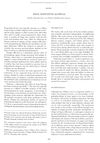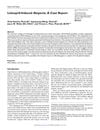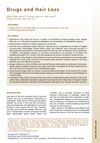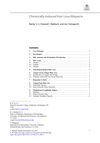Propranolol-Induced Alopecia
August 1973
in “
American Heart Journal
”
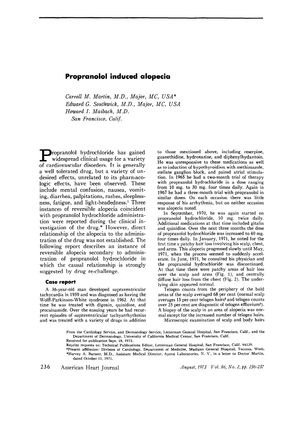
TLDR Propranolol can cause reversible hair loss.
In 1973, a case report was published describing a 36-year-old man who developed reversible alopecia, a condition characterized by hair loss, following the administration of propranolol hydrochloride, a drug commonly used for cardiovascular disorders. The patient had a history of supraventricular tachycardia and Wolff-Parkinson-White syndrome and had been treated with various medications without success. He experienced little response to propranolol when first treated in 1965 and 1967, with no alopecia noted. However, after restarting propranolol in September 1970 and gradually increasing the dose, he observed patchy hair loss in January 1971. The alopecia progressed until June 1971, when propranolol was discontinued, leading to hair regrowth. A re-challenge with propranolol resulted in a recurrence of alopecia, confirming the drug's role in the condition. The case fulfilled the criteria for telogen effluvium, a form of hair loss characterized by high telogen counts, a latency period between the triggering event and hair shedding, loss of club hairs from normal follicles, and regrowth after cessation of the triggering factor. This case was unusual because drug-induced alopecia is typically of the anagen effluvium type, where the drug inhibits mitosis in hair follicles, whereas this was a rare instance of telogen effluvium with hair bulb and shaft dysplasia caused by propranolol.
